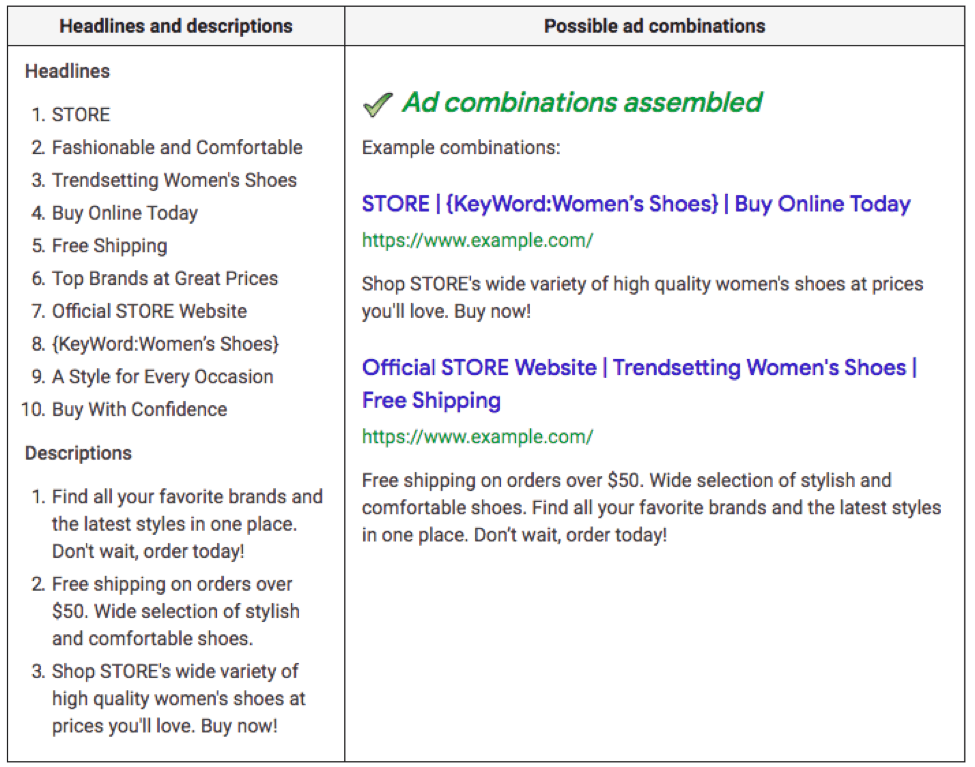Google’s ads are now bigger and better than ever. While Google is always releasing new features and improvements, two recent updates to the Google Ads platform have us especially excited! Read below to learn more about these new ad formats, and how we’ll use them to increase the performance of your account:
Expanded Text Ads
You’ve probably heard of Expanded Text Ads, so what’s changed? For the past several years, Google has only allowed two headlines and one “description” line in each text ad. Since 2016, though, Google has realized that our search habits have changed. Many mobile phones have larger screen sizes, and in general people tend to use search more often and expect more in-depth information in search results. The recent changes allow three headlines and two description lines, which also have a longer maximum character limit. This means that your ads can now be nearly twice as large (from 140 characters to 270 characters) – which is great for several reasons! First and foremost, it gives you the ability to add more ad copy to describe your business and services, differentiate yourself from competitors and entice new customers to click your ad with a strong call-to-action. Secondly, larger ads simply take up more real estate on a screen, and give you a better chance of connecting with your audience.

Old Version

New Version
Responsive Search Ads
What else is new in Google Ads? While this feature is still in beta (and thus is not yet available in all accounts), Responsive Search Ads are another exciting new addition to the platform. Unlike standard search ads, in which predefined headlines and descriptions are written to run in tandem together, Responsive Search Ads give you the ability to write up to 15 different headlines and 4 different descriptions. Google then automatically tests and displays various combinations of three headlines and 2 descriptions. Based on each user’s search query, past browsing history, device they’re using, and other data, Google learns which combinations perform best and serves the most effective message to your potential customers. This flexible ad format allows you to highlight unique messaging, keywords, features and calls to action – and uses Google’s algorithm to adapt your ad’s content to maximize performance.
Here’s an example from Google of a Responsive Search Ad:

Rest assured, though, that all of your pre-existing ads have not suddenly disappeared. While Google has found these larger ads to receive 15% more clicks than other formats, your old ads have not automatically paused. They will continue to run and give you the ability to test your new, larger ads alongside your old ones – and tweak ad copy and messaging to increase performance. All of our new, incoming clients begin with the most up-to-date ad format in Google, right from the start. For our existing clients, we’re always in the process of updating accounts every day in order to get you the best results and the most bang for your buck!
Erica Slesinger
